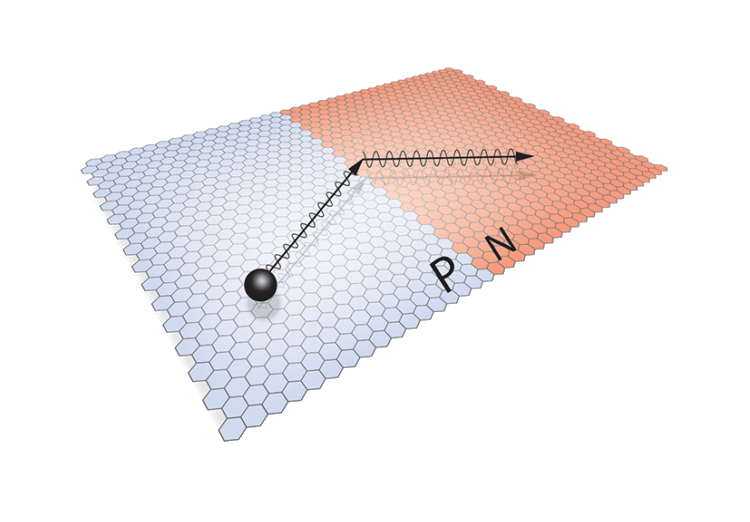The negative refraction of electrons in graphene has been seen for the first time in experiments done by physicists in the US. The work represents an important advance in the fabrication of graphene electronic devices, and could lead to new applications of graphene such as low-power transistors. Negative refraction can occur when light or other waves cross an interface between two different materials. The term "negative" is used when the direction of the light is bent in the opposite direction to that which occurs for conventional materials such as glass and water. Negative refraction is a property of some artificial metamaterials and can be used to bring diverging rays back to a focus – allowing for the creation of a perfect lens. First proposed by the Russian physicist Victor Veselago in 1968, various types of negative refraction materials have subsequently been produced and the concept has been applied to the design of invisibility cloaks. However, actually making practical metamaterials has proven to be very difficult.
